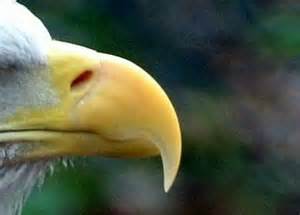Your Questions
Your Questions
Q: Dr. Eppley, I had rhinoplasty two months ago and am worried that I might have a pollybeak deformity? I was given a steroid injection on the supratip from my surgeon a few weeks back. My surgeon is assuring me that the beak-like appearance I am seeing is a result of swelling, but I am concerned that it is left over cartilage that has not been resected all the way. What are your thoughts? Can swelling mimic a pollybeak deformity? For someone with my skin thickness, how quickly can one expect to see a true pollybeak deformity surface? The first steroid injection appeared to have done absolutely nothing aesthetically. Is this normal?
 A: You are correct in your assessment that one cause of a pollybeak deformity after rhinoplasty is residual excessive cartilage in the supratip area. In those rhinoplasty patients who had an original dorsal hump taken down, inadequate removal of the cartilaginous portion of the bump (between the nasal bones and the tip) can create excessive cartilage height in the supratip region, giving the tip of the nose a rounded and downturned appearance. (cartilaginous pollybeak deformity) This may be evident right after the splint is taken off but, often due to swelling of the overall nose, may not become evident until weeks to a month later.
A: You are correct in your assessment that one cause of a pollybeak deformity after rhinoplasty is residual excessive cartilage in the supratip area. In those rhinoplasty patients who had an original dorsal hump taken down, inadequate removal of the cartilaginous portion of the bump (between the nasal bones and the tip) can create excessive cartilage height in the supratip region, giving the tip of the nose a rounded and downturned appearance. (cartilaginous pollybeak deformity) This may be evident right after the splint is taken off but, often due to swelling of the overall nose, may not become evident until weeks to a month later.
A pseudo pollybeak deformity can also occur due to the development of excessive scar tissue in the supratip area. This can develop due to a small fluid collection which can even be unintentionally created by how the tapes and splint were applied right at the time of surgery. This becomes evident as the swelling resolves where, like excessive remaining cartilage, the supratip gets or remains full.
However, the origin of your pollybeak deformity after rhinoplasty is not clear at just two months after surgery. It may very well be swelling and the injections of low dose steroids is reasonable at this point. It takes three weeks to see any result from a steroid injection and their effects are cumulative. It is not a fast fix. Also, how effective they can be is partially dose related.
Dr. Barry Eppley
Indianapolis, Indiana
Q: Dr. Eppley, I had a rhinoplasty done three years of which I am very unhappy from the results. I am of Middle eastern ethnicity and initially had a big hump on my nose that I wanted to get rid of. I just wanted my nose to look more proportionate and not be so big. Right after ther surgery it did look better but as the swelling went down after a few months it didn’t look as good. While the hump is gone, my nose is now twisted and somewhat deformed. My breathing got worse after surgery too. It seem like it is getting worse with each passing year, is that possible? i have attached some pictures so you can see what I mean. I know I need a redo rhinoplasty but what do you recommend to make it better?
A: Your nose has some of the classic problems from an over-resected or radical reductive rhinoplasty. I suspect this was done through a closed technique and you may have initially had a large dorsal hump. Your nose shows middle vault collapse, indentations at the osseo-cartilaginous junctions, a pollybeak tip deformity and alar rim retraction. The upper nose deformity can happen when a large dorsal hump is taken down and the resultant open roof is closed with osteotomies that get infractured too far. This causes disruption of the upper lateral cartilages from the nasal bones creating an ‘hourglass’ deformity where the hump used to be. The middle vault constriction (pinched middle third of the nose) is the result of too much of the height of the upper lateral cartilages being removed causing collapse and possible breathing difficulties from pinching of the internal nasal valves. The tip deformity is marked by a hump in the supratip area and alar rim retraction with excessive nostril show. This occurs when too much cartilage is taken away and the tip is no longer supported. It then collapses and retracts so that the upper end of caudal end of the septum (septal angle) is now more prominent than the tip.
Your revisional rhinoplasty would be done through an open technique using spreader grafts for the middle vault, rasping of the dorsum, lowering of the lower end of the septal height, and columellar and alar rim grafts to the tip. In essence, cartilage support need to be put back into your nose to improve its appearance as well as your breathing.
Dr. Barry Eppley
Indianapolis Indiana

